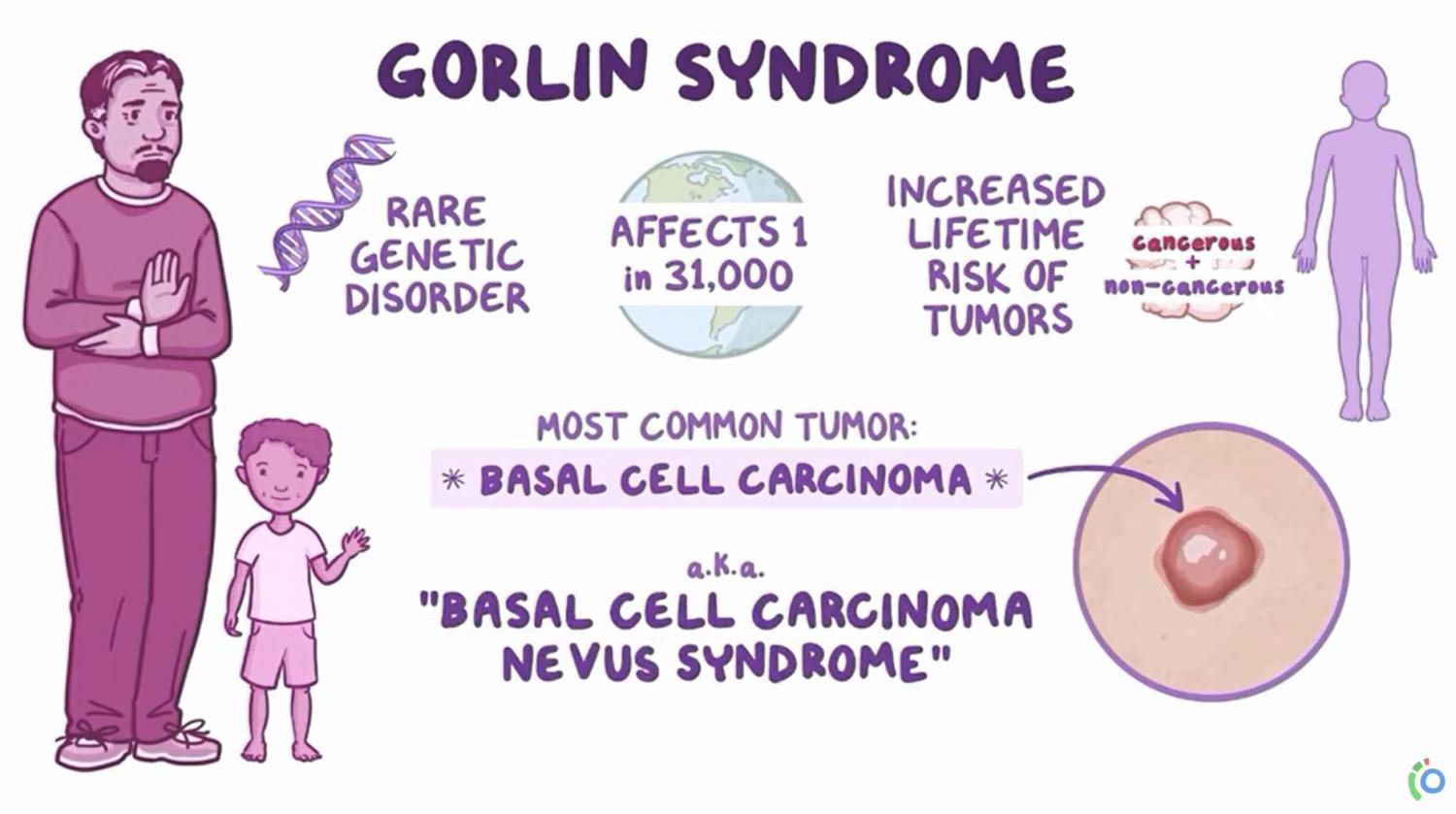
Rare Disease Education: Gorlin Syndrome
Editor: Kelsey LaFayette, DNP, RN, FNP-C
"When you hear hoofbeats, think of horses, not zebras,” is a common saying in medical education that means you should think of common conditions first, instead of rare ones, in making a diagnosis. “Rare” is a relative term though and about 7,000 rare, or "zebra," conditions affect more than 350 million individuals worldwide. Although these conditions collectively affect an enormous number of people, each of these conditions individually is rare enough that it can be difficult to secure the resources to study them and to develop treatments and cures. Likewise, awareness of rare conditions may be low and health care professionals may not be familiar with their signs and symptoms making it more difficult to reach a correct diagnosis and provide effective treatments.
To increase knowledge about rare conditions, Osmosis and the National Organization for Rare Diseases (NORD) have collaborated on an initiative to bring education and awareness to the public. We are excited to be a part of this initiative because we believe everyone deserves quality health care, no matter how rare their condition.
Zebra Highlight: Gorlin Syndrome
Imagine a car speeding straight towards a wall. Generally speaking, there are two ways an undesirable result arises: either the car’s accelerator is stuck moving forward or the car’s brakes don’t work. Similarly, cancer arises in two ways genetically: either oncogenes that drive proliferation (accelerators) are stuck moving forward or tumor suppressor genes (brakes) stop working. The result in both cases is an uncontrolled proliferation of cells.
In Gorlin Syndrome, a mutation in a tumor suppressor gene is the root cause. Normally, this gene slows down cell division, repairs damage to the DNA of cells, and/or tells cells when to die. However, in approximately 1 in 30,000 people with today’s Zebra, the mutation will lead to basal cell carcinomas (a type of skin cancer), abnormal cysts in the jaw, bone deformities, and several other manifestations. People with Gorlin Syndrome will need careful, lifelong follow-up with multiple specialists to make sure any arising complications are discovered as early as possible. Treatment is geared towards specific manifestations.
To learn more about diagnosis and prevention in Gorlin Syndrome, watch the dedicated Osmosis Video.
Meet Viki, Mother of 2
Even though there were many signs, Viki had been unknowingly living with Gorlin Syndrome for 27 years before being diagnosed, a testament to the diagnostic odyssey of people living with rare diseases. The diagnosis only came when her infant daughter’s head circumference was abnormally large. Watch the video above to follow the family on their roller-coaster journey with Gorlin Syndrome.
Educational Video:
More Information
